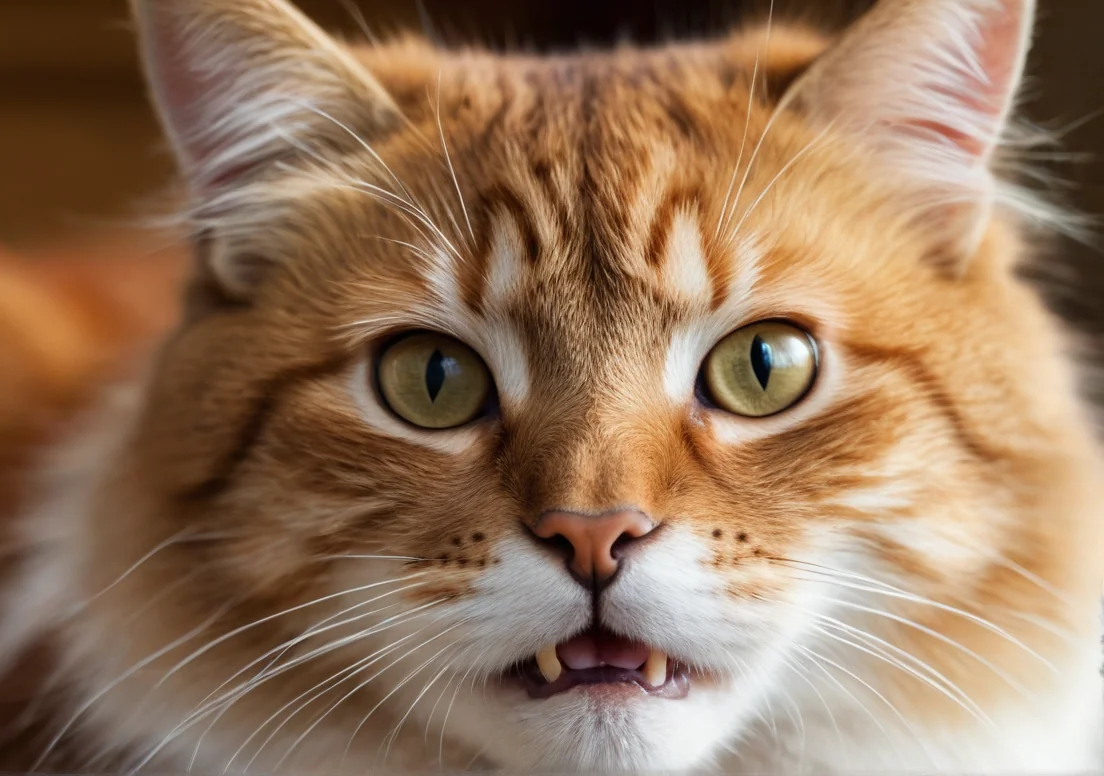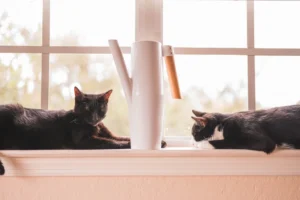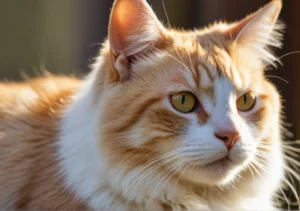Cats can be full of surprises, and one of their more puzzling behaviors is growling. If you’ve ever experienced that low, menacing sound from your feline friend, you might be left wondering what’s provoking such a response.
Cats growl for several reasons, including fear, territorial disputes, or discomfort. They might feel threatened by another animal or person, or they could be trying to communicate distress or a desire to be left alone. What may seem like mere annoyance often has deeper meanings, and there are layers to this behavior that warrant a closer look.

What Does Growling Mean for Cats
Growling is more than just a sound; it’s a crucial part of a cat’s communication toolkit. When your feline friend growls, it’s typically expressing discomfort, frustration, or fear. This low, rumbling noise serves as a warning to others, signaling that they feel threatened or upset. Unlike a purr or meow, which often convey positive emotions, growling can indicate that your cat is on high alert.
Understanding that growling is a part of natural feline behavior is essential. Cats use this vocalization when they need space or when they feel that their territory is being encroached upon. While some growling may seem harmless, it can be a clear message that your cat wants to be left alone or that it perceives a potential threat. Paying attention to other body signals, like dilated pupils or raised fur, can help you interpret the situation more accurately.
In special cases, like during play or while engaging with other pets, growling may not always indicate aggression. It can sometimes be a part of playful banter. Still, it’s important to ensure that all parties involved are comfortable. Monitor their interactions for signs of genuine aggression or stress.
When Do Cats Usually Growl
Several situations can trigger your cat’s growl, and being attuned to these moments can help you manage their behavior better. Here are common circumstances when you might hear that unmistakable growl:
Territorial Disputes : Cats are inherently territorial creatures. If another pet or an outdoor cat invades their space, your cat may growl to assert dominance.
Fear Responses : Sudden noises, unfamiliar environments, or the presence of strangers can trigger fear-based growling. It’s their way of saying, “I’m scared—stay back!”
Pain or Discomfort : If your cat is in pain, whether from an injury or a health issue, growling might be a way to express their discomfort. If you notice growling paired with other signs of distress, a vet visit might be necessary.
Overstimulation : Sometimes during playtime or petting, a cat may become overstimulated and growl as a way to signal they need a break.
Resource Protection : Growling can occur during feeding time or when a cat is playing with a beloved toy, as they might want to guard their resources from other pets.
Understanding these triggers can help you create a more harmonious environment. Always respect their growling; instead of trying to push boundaries, give your cat the space they need. Moreover, if growling becomes frequent or severe, it might be worth a chat with your veterinarian to rule out any underlying issues.
Can Growling Indicate Illness
Growling isn’t just a sign of displeasure or annoyance in your cat; it can often be a vocal expression of distress related to illness or pain. Cats are masters of masking their discomfort, so when they start growling, it could be an indication that something’s not right. If your normally placid kitty suddenly starts vocalizing in this manner, it might be worth investigating further.
Look out for other signs that could suggest illness, like changes in appetite, lethargy, or unusual behavior. Common reasons for growling associated with health issues include dental problems, arthritis, or more severe conditions like infections. If the growling is accompanied by signs of pain—such as a hunched posture, reluctance to be touched, or changes in litter box habits—don’t hesitate to consult your vet. Quick intervention can make a significant difference in your cat’s health and happiness, so getting the professional’s input is always a smart move.
How Do Different Breeds Behave
Certain cat breeds are often known for more expressive behaviors, including growling. For instance, Siamese cats are notorious for their vocal tendencies and may growl as a form of communication or during play. Similarly, Bengal cats possess a more assertive personality, which might lead them to growl more frequently than quieter breeds like Persians or Ragdolls.
While growling can occur in any breed, these expressive cats tend to use growling to set boundaries or express frustration. Here are a few traits associated with specific breeds that may lead to increased growling:
- Siamese: Highly vocal and often more demanding of attention.
- Bengal: Active and assertive; growling can indicate excitement or frustration.
- Maine Coon: Known for their sociable nature, might growl when feeling overwhelmed.
- Scottish Fold: Their calm demeanor may help them growl less, but they’ll still express discontent when needed.
Understanding your cat’s breed traits can provide insight into their behavior. If you notice more frequent growling, try to assess their environment or interactions. Providing cats with a cozy, enriched space can help reduce frustrations and, consequently, growling.
Are There Other Vocalizations to Watch For
Cats have a pretty extensive repertoire of vocalizations, each with its own meaning. Besides growling, listen for hissing—that sharp, spitting sound often signals fear or aggression. If you hear chirps or chattering, it could mean your cat’s excited by birds or other prey.
Another one to note is the yowl, especially common with unspayed or unneutered cats; it’s often a mating call or an indication of discomfort. Don’t forget about the comforting purr; while it can signal contentment, it can also mean a cat is soothing itself during stress.
Pay attention to the context of these sounds. If your cat’s growling or exhibiting other vocalizations while interacting with people or other pets, it might indicate territorial disputes or play aggression. Recognizing these nuances can help you understand your furry friend better.
For an additional insight, look at your cat’s body language alongside vocalizations. Tail position, ear orientation, and overall posture can provide clues about whether your kitty is just feeling cranky or is truly upset.
Does Growling Mean Aggression
Growling in cats isn’t always a straightforward sign of aggression. It often serves as a warning signal. If your cat is growling, it might be trying to communicate that it feels threatened or uncomfortable. This vocalization can happen during play, especially if it gets too rough.
When growling is combined with other aggressive behaviors, like hissing, swatting, or an arched back, it’s a clear sign that your cat is ready to defend itself. Understanding this helps you not to approach a cat in that state, as they may feel cornered and react accordingly.
However, growling can also be more complex. Some cats growl when they’re in pain or feeling ill. If you notice this vocalization accompanied by other changes in behavior, like hiding or reduced appetite, it could be worth a visit to the vet.
In summary, growling can signify aggression, but it can also reflect discomfort or fear. Keep observing and consider the whole context—your cat is trying to tell you something!
How Can I Calm a Growling Cat
A growling cat isn’t just voicing an opinion; it’s signaling discomfort or displeasure. Reacting calmly is key to de-escalating the situation. Here are some practical tips to help calm a growling cat:
Give Space : Allow your cat room to breathe. Sometimes, they just need a bit of alone time to defuse their stress.
Use Soothing Sounds : Soft talking or gentle music can help create a calming atmosphere, which might comfort your cat.
Create a Safe Zone : Establish a cozy, quiet area where your cat can retreat when they’re feeling overwhelmed. This could be a designated blanket or a quiet room.
Stay Calm Yourself : Your cat can pick up on your emotions. If you’re anxious or stressed, they might sense that and react negatively. Take a deep breath and approach with a soft demeanor.
Engage in Gentle Play : If your cat is open to it, interactive play with a feather wand or laser pointer can redirect their focus.
Offer Treats : Sometimes, a favorite treat can go a long way in smoothing tensions.
Avoid Sudden Movements : Quick quick hand gestures or moves can startle your cat. Approach them slowly, letting them come to you.
A unique angle to consider is environmental enrichment. Boredom can lead to frustration, a potential trigger for growling. Invest in stimulating toys or consider setting up a cat tree for climbing to help keep your cat engaged and happy.
When Should You Seek Veterinary Help
Frequent growling can signal underlying issues that require professional attention. If your cat often growls, pay attention to other behaviors and indicators. Here are some signs that suggest a call to the vet is warranted:
Persistent Growling : If growling happens more often than usual, it could indicate chronic pain or anxiety.
Changes in Appetite : A sudden decrease or increase in appetite can be a sign of medical issues.
Lethargy : If your cat is growing lethargic or showing less interest in activities they usually love, it’s time for a check-up.
Hiding or Avoidance : A cat that withdraws from social interactions or hides for extended periods may be experiencing stress or health concerns.
Aggression : If growling escalates to hissing or swatting, it signifies particularly high levels of distress.
Physical Signs : Look for symptoms such as limping, swelling, or grooming changes.
Excessive Vocalization : If growling is accompanied by other vocalizations, it could mean more than just displeasure.
Being observant can help keep your cat healthy and happy. If none of these symptoms present, but you’re still concerned, trust your instincts and consult your veterinarian; it’s better to err on the side of caution.
Interesting Facts About Cat Vocalizations
Cats are communicative little creatures, and their vocalizations can tell you a lot about what they’re feeling. Beyond growling, they’ve got a whole range of sounds that carry distinct meanings. Here’s a quick breakdown of what you might hear.
Meowing : This sound is mostly for humans. Cats have learned that these plaintive calls get our attention. Depending on the tone and pitch, it can signal anything from a polite request for food to a “Hey, pet me!” plea.
Purring : Often associated with contentment, but purring can also indicate discomfort or pain. It’s a sort of self-soothing mechanism, so pay attention to the context.
Chirping or Chattering : Usually occurs when a cat spots birds or critters outside. This sound might express frustration or excitement, maybe even an instinctive call to hunt.
Hissing : A clear sign of distress or a warning to back off. It’s a cat’s way of saying “Stay away, I’m not comfortable!”
Trill or Chirrup : A friendly sound often used by mothers to call their kittens or by cats greeting their humans. It’s a mix between a meow and a purr, playful in tone.
Understanding these different sounds can help you connect with your cat better. Notice how your cat communicates in various situations—doing so can help you grasp exactly what they’re trying to convey. If your cat growls, take a moment to check if there’s something specific bothering them.
Alex, a passionate animal lover, has experience in training and understanding animal behavior. As a proud pet parent to two dogs and three cats, he founded AnimalReport.net to share insights from animal experts and expand his knowledge of the animal kingdom.




